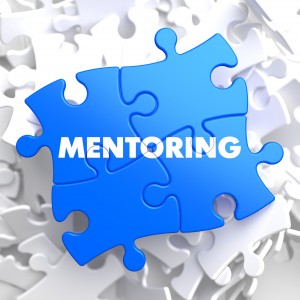 As the director and leader of a large child care center in Boston, which included 18 classrooms (6 infant, 6 toddler, 5 preschool and 1 kindergarten), an enrollment of 200 fulltime children, and a staff of 67 (most of whom were teachers), I knew that the key to quality was to find, hire, and retain the finest teachers! I also knew that we had to provide unique, individual opportunities for their professional growth. The children would thrive if our teachers were motivated, inspired, excited, and passionate about their teaching.
As the director and leader of a large child care center in Boston, which included 18 classrooms (6 infant, 6 toddler, 5 preschool and 1 kindergarten), an enrollment of 200 fulltime children, and a staff of 67 (most of whom were teachers), I knew that the key to quality was to find, hire, and retain the finest teachers! I also knew that we had to provide unique, individual opportunities for their professional growth. The children would thrive if our teachers were motivated, inspired, excited, and passionate about their teaching.
When we added the mentor teacher rung to our career ladder, we provided recognition to these experienced and skilled teachers. We offered learning opportunities to them, particularly in the areas of peer coaching, reflection, leadership, and adult development. In addition, we offered learning opportunities to our novice teachers (protégés) who were committed to furthering their professional development. And the end result was improvement in the overall quality of our entire program.
We decided to call the first year a “Pilot Mentor Teacher Program.” The word “pilot” is a great word to use (for anything) because it doesn’t commit you from the start. We decided to just try it out for a year – and then decide whether or not to add the mentor teacher level to our organizational structure. Pressure off!
So, we put together a packet of information about the program that contained the following:
- What is a mentoring partnership?
- How is a mentoring partnership formed?
- How does development take place?
- Mentoring as a method of professional development.
- Why a formal program?
- What the mentor teacher program is not.
- Some of the benefits of mentoring.
- The qualification of mentors and protégés.
- How will the matches be made?
- Is work time being set aside for this?
- What do we talk about?
- How do we get started?
- What is expected of me – as a mentor or as a protégé?
Teachers applied for the mentor and protégé positions in our program.
Minimum requirements for our mentor teacher applicants were:
- Three or more years experience as an early childhood teacher
- Lead teacher certification
- One or more years teaching at our early childhood program
- A one year commitment
Any full time teacher was eligible to apply for a protégé position.
Both mentor and protégé candidates completed an application as the first step in the selection process. Mentor candidates also needed two letters of reference from a supervisor, colleague, and/or parent.
The application for mentors included:
- Why do you want to be a mentor teacher?
- Describe someone who was a mentor to you.
- List areas of your professional expertise and interests.
- In what ways to you think you can contribute to the growth and development of a protégé?
- Describe your expectations of an ideal mentoring partnership.
The protégé applications included:
- What do you expect to gain by participating in the mentoring pilot program?
- What do you expect to contribute?
- What, if any, reservations or concerns do you have about entering into a mentoring partnership?
Both mentor and protégé candidates were interviewed by the management team, which included the director, assistant director, and supervisors.
We created a set of interview questions for mentor candidates and another for protégé candidates.
After the mentors were selected, we selected the protégés – with an eye to building teams of two. Our management team established the mentor/protégé matches using information from their applications, references, and interviews. We thought about linking the needs and goals of the protégé with the experience and expertise of the mentor; we thought about age, culture, gender, and educational experience; and we thought about the chemistry between the two candidates, their common ground, interests, and life experiences. All of this to put the right two people together for their mentor/protégé partnership.
As you can see, it was a process – and, one that we tweaked several times.
If you would like to talk more about the details (I won’t overwhelm you here), just contact me. I would be happy to share our thinking, process, applications, interview questions, and more with you. We had a great run with our mentor teacher program. We learned a lot along the way – to be passed on.
